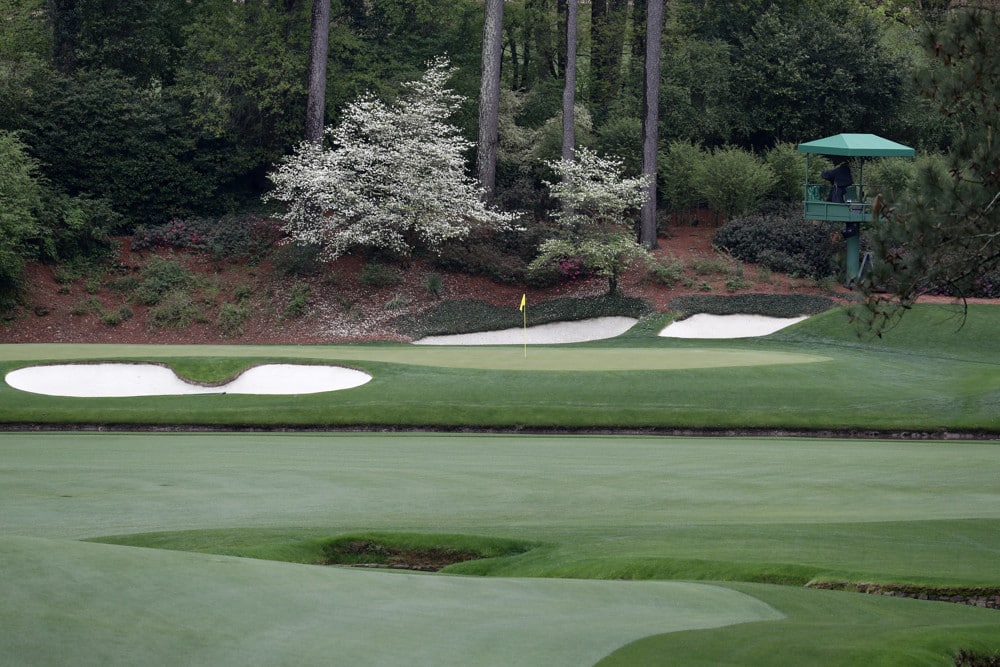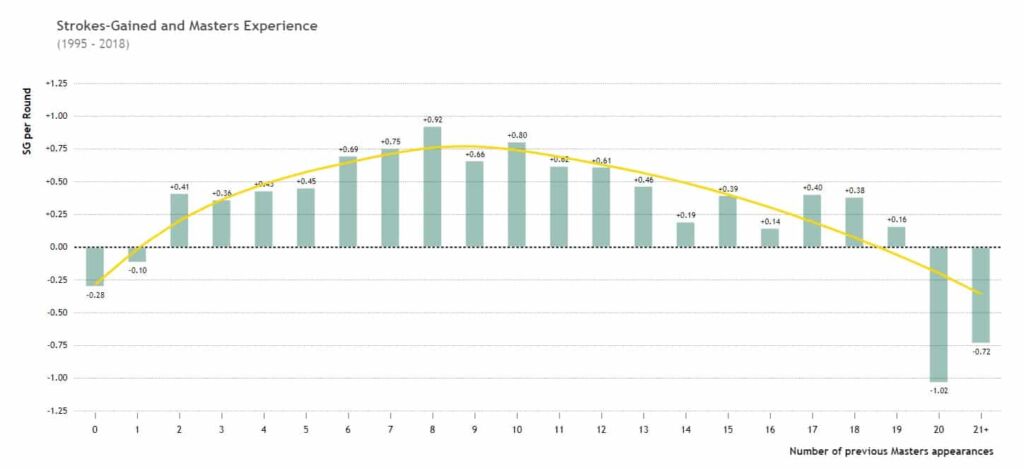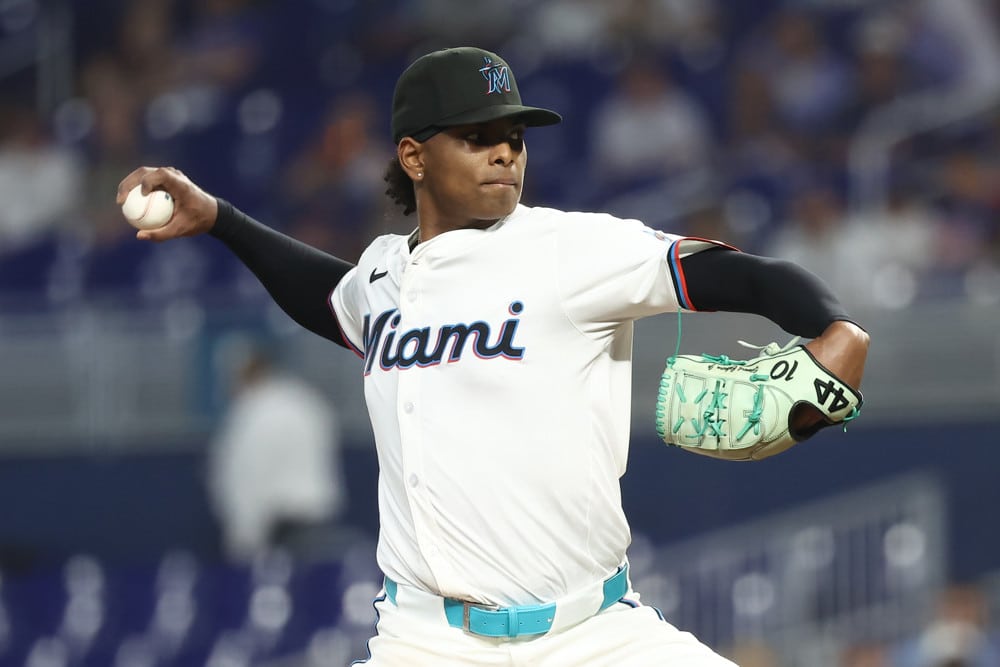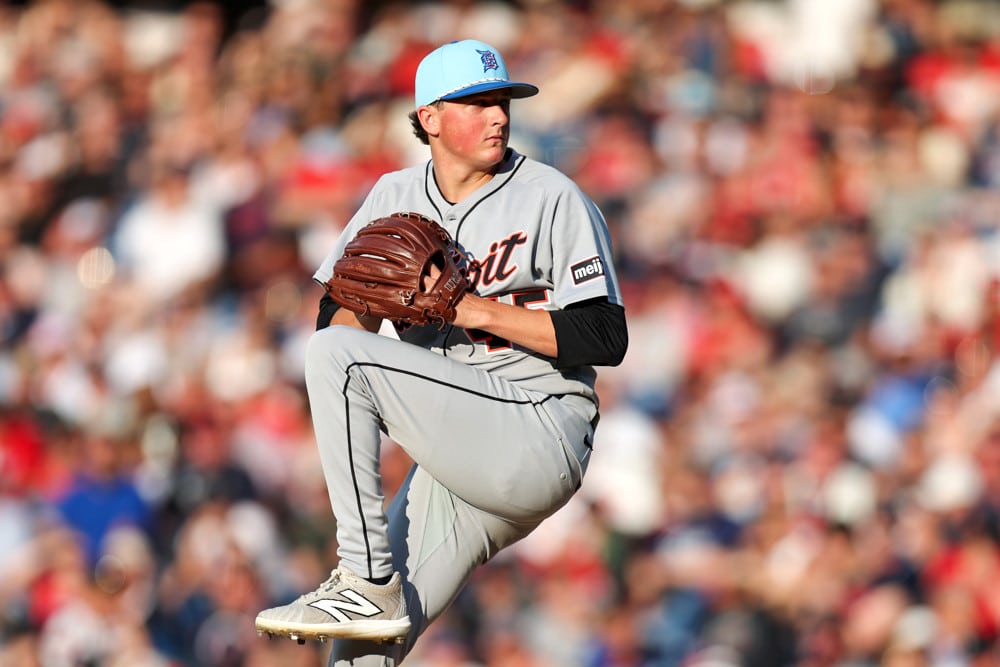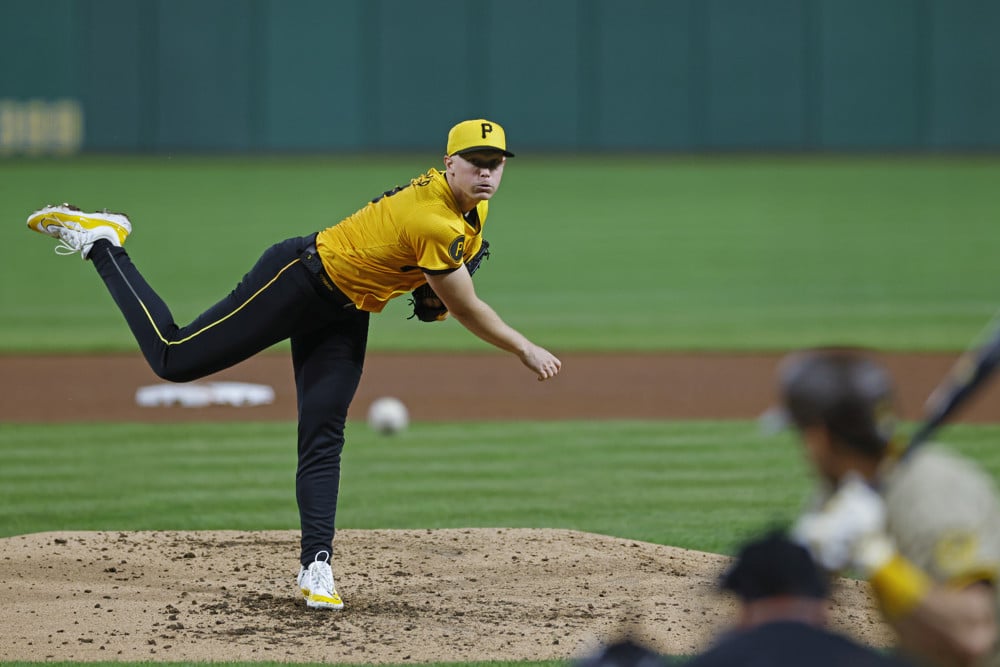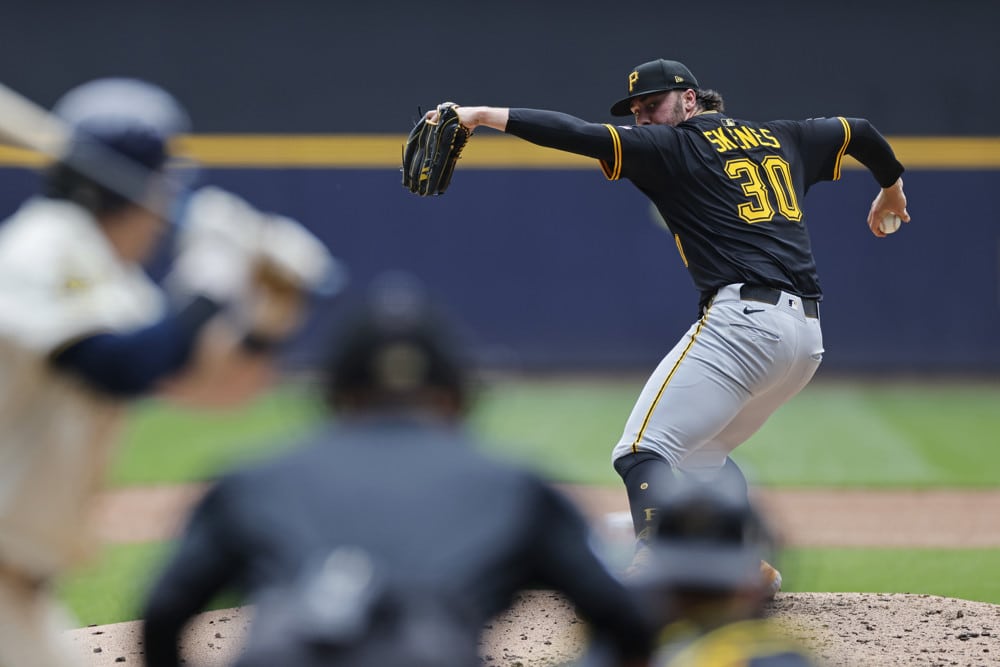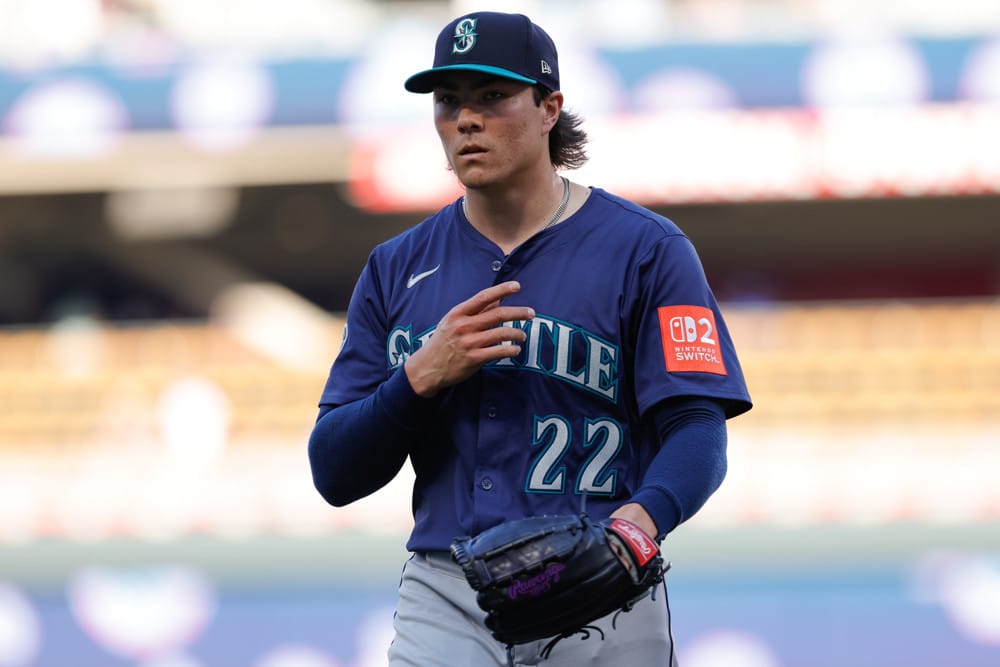Back in its customary place on the calendar, the granddaddy golf tournament of the year feels a lot more normal in 2021. The world’s best players head to the famed Augusta National Golf Club for the 2021 Masters. Here’s a preview of the Masters and everything you need to know before placing a single bet.
The Masters Preview: The Field
The field for the 2020 Masters was frozen in April. That meant that players who otherwise would have received an exemption by the time November rolled around were excluded from the tournament. This week, all those players finally get a chance to shine at Augusta National. Notable top players who were shut out of the Masters in November were Daniel Berger, Viktor Hovland, and Harris English. All of them are comfortably in the field thanks to victories and a secure spot inside the Top 50 of the Official World Golf Rankings.
While almost all the top players are in the field, there are a few battling injuries heading into the Masters that have some question marks. Among them is Brooks Koepka, who needed yet another procedure on his knee after the WGC – Workday Championship. As of today, Koepka has given no indication of withdrawing from the tournament. That might make his 30/1 price to win the Masters a bargain. But it carries a lot of risk because of how invasive and intense his rehab was to get ready for the tournament.
Another player nursing injuries ahead of the Masters is Justin Rose. Rose withdrew from both the Arnold Palmer Invitational and the Players Championship with a back injury and opted not to compete in the WGC – Match Play. Justin Rose has several close calls at the Masters, and when healthy should always be considered a favorite to win the event. This is not the first time he’s battled back injuries in his career. The fact he’s withdrawn from three straight tournaments with a back injury, however, makes him almost unbettable.
For the full field, click here.
The Masters Preview: The Golf Course
Augusta National needs no long introduction. Even casual fans know the prominent holes on the golf course, the traditional Sunday pin placements, and why Augusta National is considered one of the finest golf courses in the world.
Augusta National carries significant weight in the golf world in setting both policy and standards. It also is keenly aware of the evolution of golf and how, specifically, technological innovations have changed the game. The club is always looking for ways to tweak the golf course so it can keep up with technological advancements.
The only recent change to the golf course came in 2019. Hole No. 5 – Magnolia, was lengthened to 495 yards after a new tee-box was created across a service road on the property.
The changes made this hard hole even tougher for the Masters. The most optimal angle into the green is from the left side of the fairway. Players taking on the left side must contend with two deep fairway bunkers in their landing zone. Anyone who found themselves in the bunkers last year had no shot to the green.
Many players want no part of these bunkers and bail out right with their tee shot. But this creates a very long approach shot into one of the toughest greens on the golf course. There’s a large swale guarding the front of the green waiting to repel balls off of it. Players who hit into this green with a long iron have a very tough time keeping it on the putting surface.
Otherwise, the golf course everyone knows and loves remains the same. Here are a few highlights and lowlights of the golf course:
Best Hole Everyone Talks About – Hole No. 13 – Azalea
Almost all golf fans can close their eyes and play this hole tee-to-green from the memory banks. The tee shot is a difficult one, especially for right-handers. It requires a draw around the dogleg to catch the slope for a shorter approach. A bolder player may try and cut the corner over the tree line. Anything less than a perfect tee shot will get knocked into the trees and likely into the tributary of Rae’s Creek.
After successfully executing the tee shot, the players face about a 200-yard approach through swirling winds into a large but firm and tricky green. Any shot short will find itself in the tributary of Rae’s Creek. Anything long will either find the bunker or settle in a collection area. That’ll lead to a nervy bunker or chip down a lightning-fast green to the traditional Sunday pin location in the front right portion of the green. Though this hole is reachable in two for almost all players, a birdie certainly isn’t assured.
Add to it that the hole is almost entirely secluded from the patrons and is surrounded by seas of vibrant pink, white and purple azaleas, there aren’t many holes in golf finer than the 13th at Augusta. And what makes the hole truly great is at 510 yards it’s a hole that even us amateurs can walk off the green with a birdie. But to do so, every shot must be executed perfectly. Otherwise, the strokes can pile up in a hurry.
Best Hole No One Talks About – Hole No. 9 – Carolina Cherry
While several holes look strikingly different than the original Alister MacKenzie design, the 9th Hole has remained largely unaltered over time. The hole was a long 420 yard Par 4 back in 1933, and it stands at 460 in 2019. This is not a dramatic lengthening over time.
The tee shot is a relatively simple one. The fairway widens down the chute and runs downhill. But what gives the golfers nightmares is the 9th green, a three-tiered menace that requires perfect precision with an approach shot to make sure the ball is on the proper level of the pin placement.
The approach shot is uphill from the bottom of a gully some 20-30 feet below the putting surface. If the approach shot is woefully short, it’ll run off the false front almost all the way back to their feet. But that doesn’t mean the safe play is to hit over the flag just to be on the dance floor. If you roll the ball from the back of the green to the front, it’ll go down almost 10 feet of slope. If you ever want to see a professional golfer uncomfortable on a putt, watch them try and hit a 10-foot putt above the hole on the 9th, knowing if they misjudge the speed or line they may be chipping back up the green for their next shot.
Worst Hole Everyone Talks About – Hole No. 7 – Pampas
The Par 4 7th is one of the least recognizable holes on the golf course from its original design. MacKenzie and Bobby Jones originally designed this hole as a short Par 4 similar to the 18th at St. Andrews. The hole even featured its own “Valley of Sin” with a steep false front trickling down to a deep collection area to yield a difficult chip back up to the hole.
The hole was deemed “too easy” by the members, and Horton Smith reduced the size of the green to make it more of a “postage stamp”. Three large bunkers were also added in front of the green to gobble up short approach shots. In 1951, the two back bunkers were added to further punish poor approach shots.
In 2000, Tom Fazio came in and changed the hole further. He added additional trees along the fairways, increased the rough, and lengthened the hole to 450 yards. This once wide open, short Par 4 featuring a false front and a complex three-tiered green was now transformed into a claustrophobic long Par 4 into a small green heavily fortified by bunkers. The hole just doesn’t fit in with the spirit of the rest of the golf course. One of the hallmarks of the golf course is to play the hole strategically with each shot, oftentimes setting up the putt one desired on the green of a Par 4 or 5 with a proper tee shot. There is very little strategy to this hole other than avoiding the pine trees and the bunkers. This hole is regarded as one of the weaker ones on the golf course.
Worst Hole No One Talks About – Hole No. 16 – Redbud
It’s not a bad hole. In fact, it’s a great one. It’s one of the most copied Par 3 templates in golf and one of the most famous Par 3’s in the world. Depending on where the pin is, it’s either a very easy birdie hole or one where a player will struggle to make par if they miss in the wrong spot.
My issue with the hole in the traditional Sunday pin placement. Everybody knows that it’ll be at the bottom of the basin on the middle-left side of the green. The strategy is to hit a tee shot towards the middle of the green, and then gravity takes over to funnel the ball to the hole. If you miss it, it’s best to miss it at the left greenside bunker. While short-sided, players can blast out past the pin and let the ball funnel back to the hole using that same slope for a tap in par. Players who miss long or right are almost certainly walking away with a bogey.
While it’s great that fans know exactly how this hole plays, it’s become a bit of a carnival act on Sunday. It’s now a surprise if someone DOESN’T either hit a hole in one or come inches close from one. The now almost annual Sunday Hole-In-One on 16 has lost a bit of its excitement because we know it’s coming.
I would prefer if they moved the traditional Sunday pin to Thursday. It’s a fun pin, and it’s one that can produce an easy birdie for someone to end their round on a high note. A birdie should be hard-earned here on Sunday. There are enough scoring holes on Sunday to provide for drama. I’d much rather see a tougher pin placement to add another tough test down the back nine.
The Masters Preview: Betting Strategies
The first place to start is identifying the differences between what we saw in November and what we’ll see this week. Last November, Augusta National had to scramble in order to get the golf course ready for play. Overseeding the golf course with ryegrass usually begins in late September to early October depending on the weather. That meant the golf course only had about 50 days to get a healthy ryegrass playing surface in place before tournament play.
But the warm fall weather didn’t allow for all the bermudagrass to go dormant. That made it a little more difficult to chip off the tight lies around the green because the lie was never consistent. Bentgrass tends to perch the ball up a bit and make it easier to slide the club underneath the ball for solid contact and the ability to create spin. It’s tougher to do so when a ball sits on a flatter tight Bermuda lie. Balls in the fairway rough also had inconsistent lies, as ryegrass rough behaves differently than bermudagrass.
That won’t be an issue this week. The golf course had six months to prepare it for standard April tournament conditions. None of the challenges the inconsistent turf presented the players in the Fall will exist for them this week. Augusta National will be the familiar test everyone who has played it expects.
Another change is the weather. There was a significant amount of rain that fell on the golf course in the days leading up to the tournament. The golf course already had a significant amount of moisture on it because of the rush to grow healthy ryegrass overseed on the property. That made the golf course very, very soft, and the greens were very receptive. It was so receptive that birdies were plentiful and the scoring record fell. It also gave an edge to longer hitters in the field. The ball didn’t roll out at all in the fairway, so players with big carry distances had much shorter clubs into soft, receptive greens. It didn’t make hitting fairways as much of a necessity as in previous years.
This week, by all reports the golf course is very firm due to recent weather. This week’s Augusta National Women’s Amateur gave a preview of how The Masters will play out. What we saw was a rock-hard Augusta National that’s been baked out by a warm spring and a lack of rainfall. It was very difficult to keep the ball in the fairway. Balls even continued to roll through the rough to interesting places. It also made hitting from the fairway crucial for the amateurs. It was very difficult to get close to the pins because the greens were so firm. Any sort of spin a player could get on their approach shot makes a world of difference. Hitting from the fairway is the best way to do that.
The golf course will receive some rain Thursday and Friday. That should soften up the golf course a bit during play. But unless it’s significant, look for Augusta National to play a lot different once the ball hits the ground than in November. And while the winds aren’t forecast to be quite as strong as it looked like they would be, the golf course should see double-digit wind gusts every day. Three of the four days also see winds coming from a westerly direction. Historically, that’s the toughest direction the wind can come from. The 2021 Masters should be a lot tougher than the one last November.
So what should a gambler look for this week? Unfortunately, Augusta National Golf Club doesn’t release strokes gained data to the general public. That’s the most crucial information a bettor can have to make bets. In general, players need to do a little bit of everything well at Augusta National to contend. It favors players who have a great combination of length and accuracy off the tee. It commands precision iron play. A good scrambler can get up and down off of tricky tight lies. And good putting is necessary to navigate the lighting fast undulating greens of Augusta National.
The weather elevates and diminishes certain attributes. Based on the current forecast, good iron play and good scrambling will probably be a little more important than it was last November. Hitting out of the fairway will also be a little more important than last November, however, overall players will be missing fairways more often. Still, it’ll be important to capitalize when hitting out of the fairway when they do. Whereas the November Masters was more of a long drive and putting contest, this one will be more of a ball striking and scrambling contest. A player with elite length can overpower Augusta National in any condition. But generally on a firm and fast Augusta National precision trumps power.
The Masters Preview: The Field
There are also a few trends bettors can rely on when looking at the field. Eight of the last nine winners of the Masters ranked inside the Top 10 in Strokes Gained – Tee-to-Green heading into the tournament. Here’s the Top 10 heading into this week (courtesy of PGATour.com, with pre-tournament odds):
- Bryson DeChambeau – 11/1
- Jon Rahm – 12/1
- Collin Morikawa – 30/1
- Will Zalatoris – 120/1
- Justin Thomas – 11/1
- Dustin Johnson – 8.5/1
- Tony Finau – 33/1
- Keegan Bradley – N/A
- Patrick Cantlay – 22/1
- Sergio Garcia – 60/1
Another trend to consider in your preview is experience at the Masters. While good past history at the golf course matters, there is a strong trend of an improvement of performance the more times one plays the course. DataGolf did an analysis of total strokes gained at Augusta National based on previous tournament appearances. Their study revealed three significant jumps in performance. The first came in a player’s third Masters. Another jump came in a player’s seventh. And a third jump came in a player’s ninth appearance:
This is not a firm and fast rule for everyone and can vary a year or two, but a lot of recent winners have followed a very similar trend. Bubba Watson appeared in three Masters before winning his first in 2012. Adam Scott only had one Top 10 at the Masters in nine career starts, before a three-year stretch that included a T2, a T8, and a win in 2013. Dustin Johnson didn’t record a Top 10 at the Masters until his sixth appearance. Since then, he hasn’t finished outside the Top 10 and finally won the tournament in his tenth start.
Try and keep in mind players who are around these key windows or just entering them for your bets. Here’s a list of players at the key 3rd, 7th, and 9th Masters Appearances heading into this tournament:
Players Making 3rd Career Start (First Level Jump):
- Harris English
- Brian Harman
- Dylan Frittelli
- Matt Wallace
- Brian Gay
- Brendon Todd
- Michael Thompson
Players Making 7th Career Start (Second Level Jump):
- Matthew Fitzpatrick
- Billy Horschel
- Danny Willett
Players Making 9th Career Start (Third Level Jump):
- Marc Leishman
Lastly, here is a list of players in the field who have gained over 1.5 strokes per round at Augusta National in their career (minimum of 10 career rounds):
- Jordan Spieth: +2.90
- Jon Rahm: +2.71
- Phil Mickelson: +2.31
- Justin Rose: +2.24
- Dustin Johnson: +2.23
- Tony Finau: +2.15
- Brooks Koepka: +2.14
- Rory McIlroy: +2.10
- Jason Day: +1.99
- Lee Westwod: +1.94
- Justin Thomas: +1.94
- Matt Kuchar: +1.93
- Hideki Matsuyama: +1.68
- Daniel Berger: +1.63
- Adam Scott: +1.58
- Cameron Smith: +1.58
This list is a great preview of who will finish towards the top of the leaderboard at the Masters. Great players rise to the occasion at Augusta National. It would not be a surprise to anyone if the winner came from this group.
RELATED CONTENT
The Masters 2021 DraftKings Picks
The Masters Golf Tournament 2020 Preview


